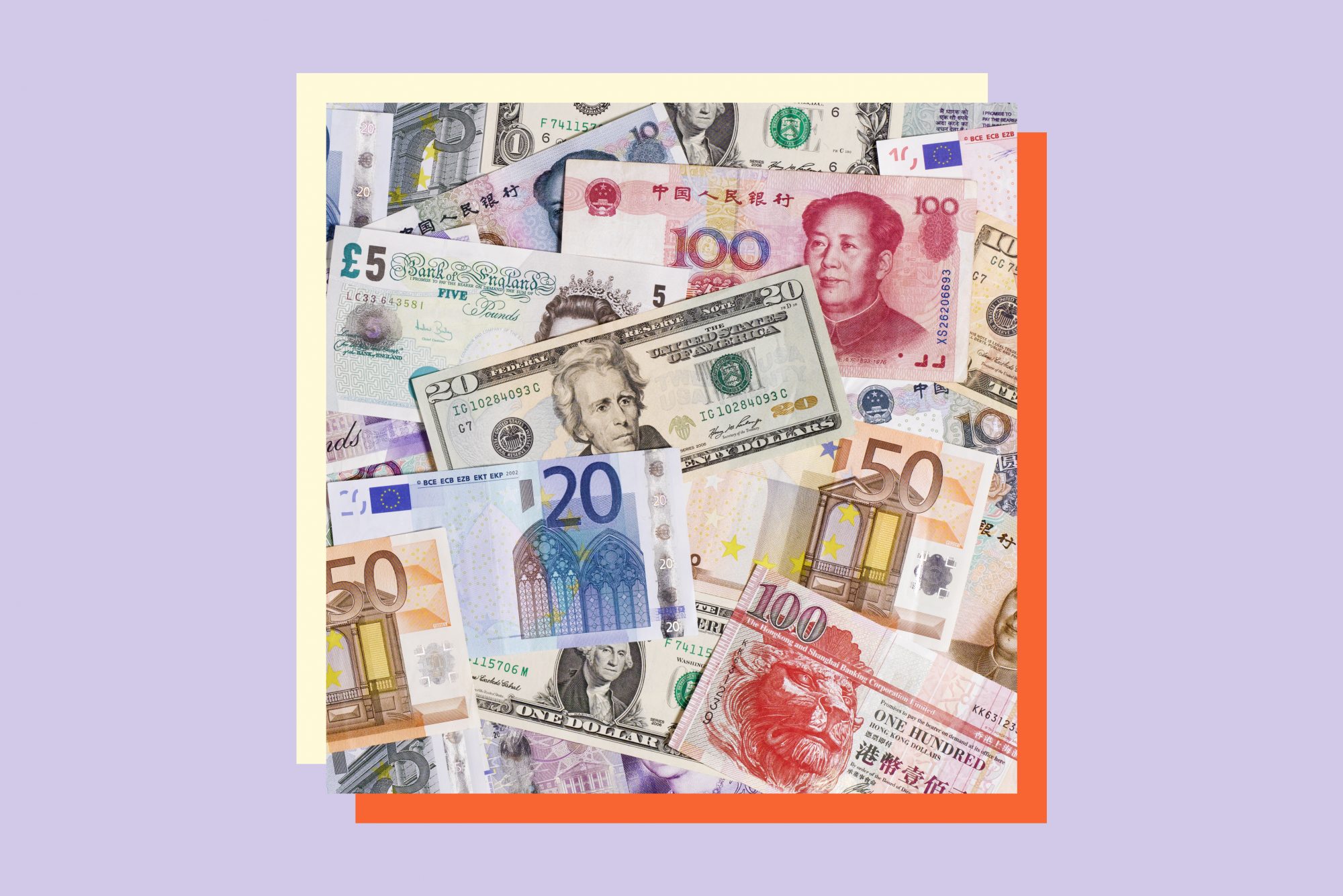Teaching kids about money is an essential part of parenting. Introducing your kids to age-appropriate money topics such as budgeting and saving can help them build better financial habits as they grow. Engaging your kids in household finances might not be the easiest at times—but if your family loves to travel, teaching your kids about exchange rates can be a fun money (and even geography) lesson. Whether you have a trip planned, or are saving up for your next family vacation, here are easy, practical ways to teach your kids how exchange rates work.

Explain what currency is to your child.
First, explain to your child what currency is and how it works. More importantly, tell them that different countries use different types of currencies and likely use a different name for their money—for example, while United States currency is the dollar, Indian currency is the rupee, etc.
Explain what exchange rates are to your child and how some countries have currency that is stronger than others. "The exchange rate defines how many pesos, euros, or baht you can get for one US dollar (or what the equivalent of one dollar will buy in another country)," says Olivia Tan, a Florida-based personal finance coach. For example, if you need to exchange 1 U.S. dollar for Indian rupees, you would get 75 rupees because the U.S. dollar has a higher value. Similarly, the Great Britain Pound is more powerful than the U.S. dollar—$1 is only equal to 0.73 GBP. If they're ready, you can also explain to your child that these rates can change depending on what's going on in the world.
Use fun, hands-on activities to help your child understand exchange rates.
Come up with some creative hands-on activities for your kids to better understand how exchange rates work—and have some fun while they're at it. Here are some fun, easy activities to try at home.
Coloring
Print out the flags of different countries, their currency symbols, and what the currency is called—and have kids color the different pictures. "Then, it will be important to teach them how to form associations and list the most important countries for each currency," suggests dad of three David Adler, of The Travel Secret. Adler suggests breaking the activity down into a few days or setting aside some time each day instead of giving your child all the information at once.
Play Money
Choose a few countries and print out some play money from each. Then, show your kid how to look up the name of each currency and its value online. You can make it into a geography lesson too, by showing where each country is on a map and talking about anything it's known for, suggests Catherine Alford, author of personal finance book Mom's Got Money.
"Depending on their age, your children can learn math, geography, and economics from a discussion about exchange rates," says Alford. She suggests coming up with an item (such as something your kid likes to eat) and figuring out how many of that item they could buy in each country if they exchanged United States dollars for that country's currency. "Repeat these steps with a few different items to help solidify the lesson," suggests Alford.
Engage your child in real-life examples so they can apply what they learned.
Once your child understands the concept through activities, help drive the lesson home by engaging them in some real-life scenarios. Parenting and education expert Karen Aronian, Ed.D., says immersion learning is the best way to help your child learn about foreign currency.
"If you can't travel, you can travel online," says Aronian. She buys her 14-year-old daughter's shampoo from Montreal-based Unscented Company, and has her convert the CAD to United States dollars to figure out the price.
"Financial education is best taught through examples of daily lives," says Ben Arbov, founder of the Greatest Gift app, a gifting platform that allows people to contribute to children's savings and education accounts.
The next time you travel to a country that has different currency, Abrov suggests involving your kids when you go exchange currency. Have your kids help you make purchases for things like food or souvenirs on your trip so they can apply what they learned at home.





